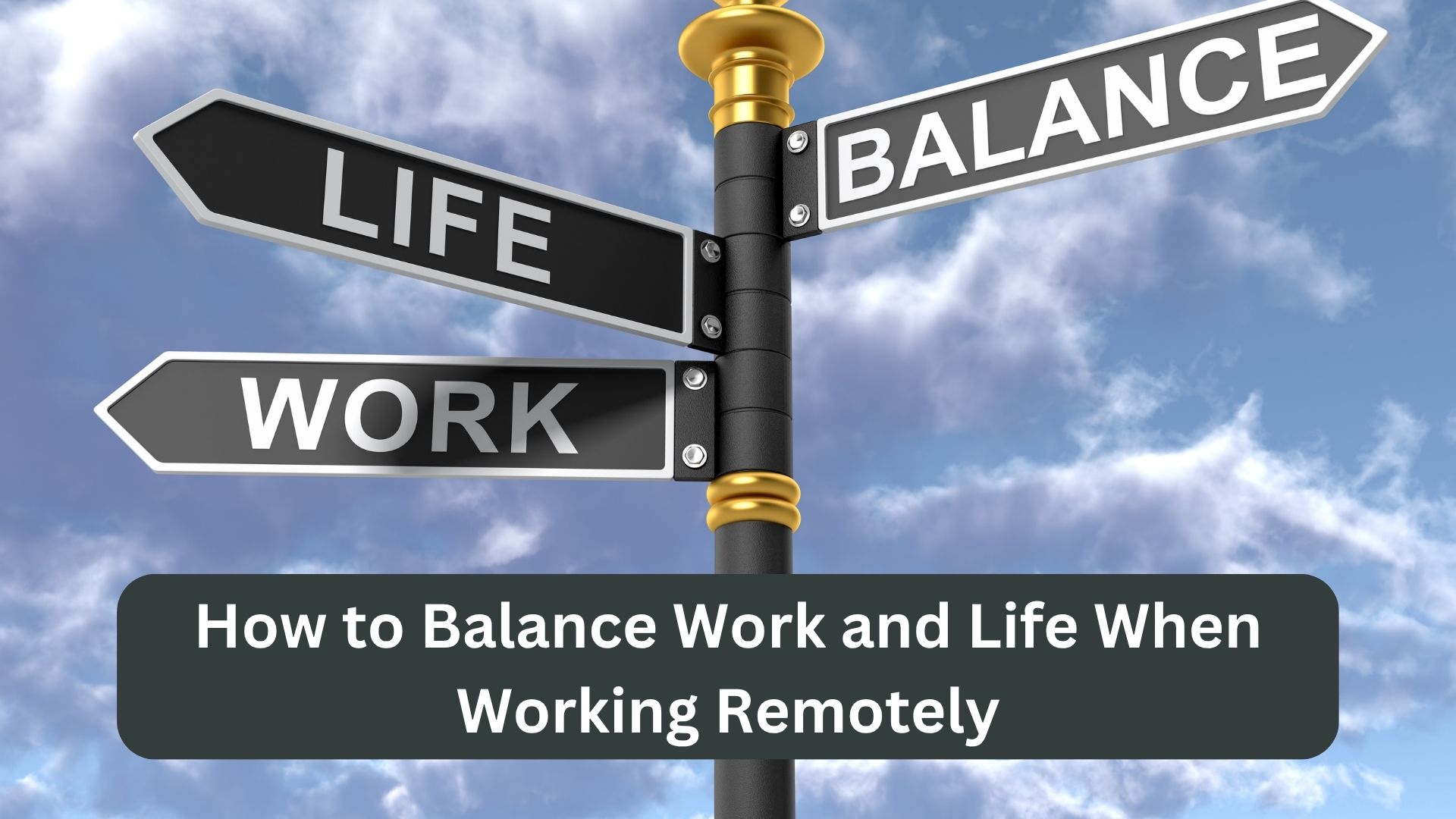Remote work offers freedom, flexibility, and the comfort of working from anywhere. But it also blurs the line between professional and personal life. Without the physical separation of an office, work can spill into evenings, weekends, and even mealtimes. To avoid burnout and reclaim your time, finding balance is key. This guide explores actionable strategies, tools, and routines that help remote professionals balance work and life—without sacrificing productivity or peace of mind.
1. Create a Clear Workspace Boundary
Designate a specific spot in your home as your work zone—even if it’s just a desk in the corner.
| What to Include | Why It Matters |
|---|---|
| Desk and ergonomic chair | Signals your brain it’s “work time” |
| Good lighting | Boosts energy and reduces eye strain |
| Office supplies in reach | Keeps you efficient and avoids unnecessary distractions |
Avoid working from the bed or couch, which can make it harder to switch off after work.
2. Set Regular Work Hours (and Stick to Them)
Without a commute, it’s tempting to work early or late. But maintaining consistent work hours helps create boundaries.
- Choose a start and end time that fits your lifestyle
- Use alarms or calendar alerts to begin and end work
- Communicate your hours with clients or teammates
Consistency helps others respect your time—and helps you respect it too.
3. Schedule Breaks Intentionally
Breaks aren’t a luxury—they’re necessary for sustained focus. Use them wisely to reset your mind and body.
| Break Type | Duration | Purpose |
| Pomodoro break | 5–10 minutes | Reset after deep focus |
| Meal break | 30–60 minutes | Eat mindfully and refuel |
| Stretch/walk break | 10–15 minutes | Move your body, rest your eyes |
Apps like Focus Keeper or TimeOut can automate reminders.
4. Use Time Blocks to Stay Focused
Time blocking helps structure your day and reduce context-switching.
| Time Block | Sample Activity |
| 9:00–11:00 AM | Deep work: writing, coding, planning |
| 11:00–11:15 AM | Break |
| 11:15–12:30 PM | Emails, admin tasks |
| 1:30–3:00 PM | Meetings or collaboration |
| 3:00–4:30 PM | Creative or client work |
Customize your schedule based on your natural energy levels and workload.
5. Don’t Skip a Morning Routine
Having a routine before work creates a healthy mental transition from home to work mode.
Sample routine:
- Wake up at the same time
- Do a quick workout or stretch
- Shower and change out of pajamas
- Eat breakfast
- Review your top 3 priorities for the day
Even a 15-minute routine can boost your focus.
6. Unplug After Hours
When your office is at home, it’s tempting to check messages at night. But constant connectivity can lead to burnout.
Tips to disconnect:
- Set your work apps to “Do Not Disturb” after hours
- Use a second device for personal use, if possible
- Create a shutdown ritual (e.g., clear your desk, review your day, plan tomorrow)
Make your evening feel different from your workday.
7. Communicate Boundaries
Working remotely doesn’t mean you’re available 24/7. Be clear with clients, coworkers, and even family.
- Set response hours in your email signature
- Use calendar blocks to show availability
- Kindly say no to tasks outside your work window
Boundary-setting isn’t rude—it’s respectful to yourself and your team.
8. Stay Social on Your Terms
Remote work can get lonely, so build connection intentionally:
| Social Option | How to Use It |
| Virtual coworking | Join a silent Zoom session or coworking platform |
| Slack/Discord communities | Chat casually with fellow freelancers or niche groups |
| Scheduled catch-ups | Weekly check-ins with friends or colleagues |
Connection fuels creativity and motivation. It’s worth prioritizing.
9. Prioritize Health and Movement
When your commute is five steps from your bed, it’s easy to become sedentary. But movement supports focus and energy.
Tips to stay active:
- Do standing desk intervals
- Add walking meetings
- Use workout apps like FitOn or Nike Training Club
- Set water and stretch reminders every hour
Even 10-minute breaks can make a big difference.
10. Keep Your Workspace Mentally Clear
Physical clutter adds mental stress. Set aside time to reset your space.
| Declutter Task | Frequency |
| Clear your desk | Daily |
| Organize cables and tools | Weekly |
| Deep clean workspace | Monthly |
Use minimal decor that inspires you but doesn’t distract.
11. Track and Reflect on Your Balance
Balance looks different for everyone. Use a simple journal or tracking app to assess your energy and satisfaction.
| Question | Journal Prompt |
| Am I working too much? | How did I feel after work this week? |
| Did I take enough breaks? | What helped me reset today? |
| Do I feel connected? | Who did I talk to this week? |
| What energized me most? | What moments brought me joy? |
Self-awareness is the first step to better balance.
12. Use Tools That Support Work-Life Harmony
| Tool | Purpose |
| Google Calendar | Schedule time blocks and breaks |
| Notion / Trello | Organize tasks and projects |
| Slack status / Calendly | Set boundaries and availability |
| Focus apps (Forest, RescueTime) | Improve focus and track productivity |
| Meditation apps (Insight Timer, Headspace) | Promote mindfulness |
The right tools create structure and free up mental space.
Final Thoughts
Remote work is a gift—but only when it doesn’t take over your life. Creating balance isn’t about perfection—it’s about intention. Small shifts in how you schedule, communicate, and care for yourself can create huge results in how you feel day-to-day.
Design your routine so that work fits into your life—not the other way around.
Want more tips on thriving as a virtual worker? Subscribe to my newsletter for weekly tips on balance, productivity, and the freelance lifestyle!







Leave a Reply